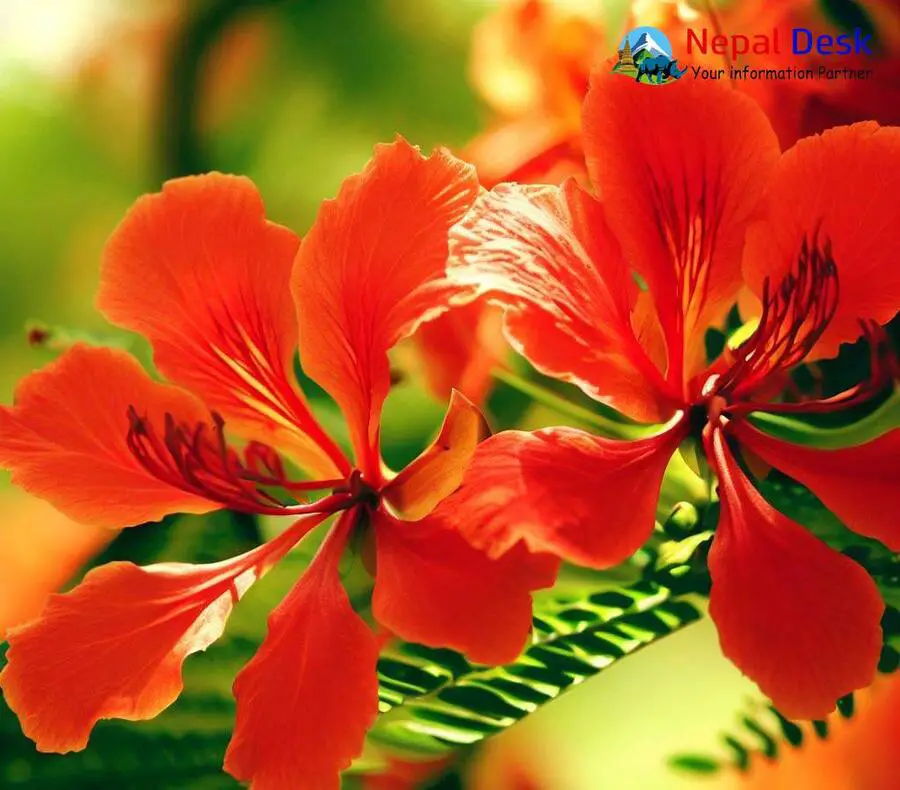
Nestled in the heart of the Himalayas, Nepal is a land of diverse landscapes and rich cultural heritage. Yet, for many visitors to this enchanting country, one of the most striking aspects of their journey is the sight of Gulmohar trees in full bloom. With its fiery red-orange flowers contrasting against the lush green foliage, Gulmohar (Delonix regia) is not only a visually stunning element of Nepal's natural beauty but also holds significant cultural symbolism.
Origins and Characteristics of Gulmohar
Though native to Madagascar, Gulmohar has been widely cultivated across tropical and subtropical regions worldwide. Introduced to Nepal centuries ago, it has now become an integral part of the country's flora. This magnificent tree can grow up to 15 meters in height and boasts wide-spreading branches that provide ample shade during the hot summer months.
The tree's most remarkable feature is its vibrant flowers, which bloom from May to July. The flowers' striking hue is undeniably eye-catching, attracting both locals and tourists alike. Moreover, Gulmohar produces large seed pods that can be used for crafts or even cooked as a nutritious snack.
Symbolism and Cultural Importance
Beyond its aesthetic appeal, Gulmohar holds immense cultural significance in Nepal. In some areas, it is believed that planting a Gulmohar tree near your home will bring good fortune and happiness to the family living there.
The vibrant orange-red color of its flowers is associated with deity figures in Hinduism, symbolizing purity and spirituality. In this context, they are often used as offerings during religious festivals and ceremonies.
Furthermore, Gulmohar trees play a vital role in preserving the fragile ecosystem through their robust root systems that help prevent soil erosion during Nepal's monsoon season.
Gulmohars and Eco-tourism
The brilliant blossoms of Gulmohar trees have also become a hallmark of eco-tourism in Nepal. When tourists visit the country during the flowering season, they often arrange treks and village tours specifically to witness the captivating beauty of Gulmohar trees in full bloom.
As these trees predominantly thrive at lower altitudes, they offer tourists a way to experience Nepal's incredible biodiversity without embarking on strenuous treks into high altitudes.
In Conclusion
Gulmohar's enchanting beauty and cultural significance make it an unmissable gem in Nepal's natural heritage. These fiery blossoms not only enrich the landscape but also join eco-tourism, spirituality, and ecology in a stunning display of harmony. A trip to Nepal during Gulmohar flowering season promises a breathtaking experience that will leave you with unforgettable memories.
